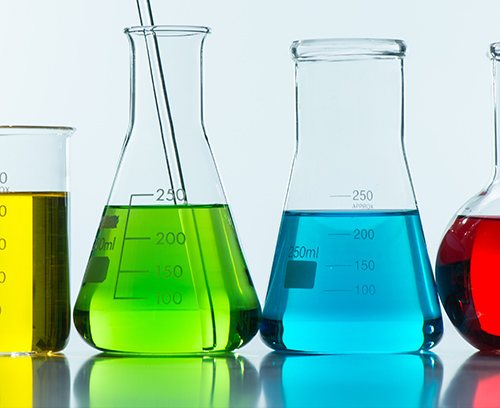How Resistant To Chemicals Are Your Electronic Enclosures?

Impact and water ingress tend to be the two biggest threats to any industrial electronic enclosure. But don’t underestimate the threat that chemicals can pose. It’s easy to assume that a big, tough box with a high IP rating will safeguard your PCBs from most threats. And indeed they will…but they’re not invulnerable.
For every ‘Superman’ enclosure there’s at least one ‘kryptonite’ vulnerability. Beware – even the most robust diecast aluminium enclosures can be affected by certain chemicals in the right (or rather wrong) concentrations…
Chemical Resistance Of Diecast Aluminium Enclosures
Diecast aluminium enclosures are completely resistant to all concentrations of brake fluid, butanol, calcium chloride, fuel oil, hydraulic oil, potassium chloride, engine oil, mineral oil and zinc sulphate. So far so good…
But they have little or no resistance to petrol, acetone and chemicals such as chlorine benzole, methylene chloride and xylene. And only limited resistance to caustic potash solution, potassium hydroxide, sodium hydroxide, nitric acid and toluol.
So what’s the solution? Glass reinforced polyester (GRP) enclosures.
Specify GRP Enclosures For Chemical Resistance
GRP enclosures offer complete resistance to a long list of chemicals. They offer superior protection when compared with other plastics such as polyamide (PA), polycarbonate (PC) and ABS.
ROLEC offers three models of GRP enclosures, each with their own technical features and benefits:
- polyTOP (IP 66/67) is compatible with ROLEC’s aluNORM aluminium enclosures. The single channel fastening system creates more space for your PCBs. Choose from 13 sizes (82 x 82 x 60 mm to 404 x 404 x 160 mm) and a variety of lid screws (slotted, triangular, collar-head)
- polyDOOR (IP 66) enclosures have hinged lids. These lids can be unclipped from the integrated hinges in just a second. Transparent lids are an option for all eight sizes (140 x 120 x 100 mm to 320 x 200 x 120 mm). Available with slotted, triangular or collar-head screws
- polyKOM (IP 65) is manufactured in 15 industry-standard sizes (80 x 75 x 55 mm to 400 x 405 x 120 mm), making them interchangeable with other standard-sized enclosures. Most sizes are similar to the aluKOM aluminium enclosure range. Options include hinges and external mounting brackets.
For more information, read our guide to specifying GRP enclosures.
But even GRP can fall victim to some chemicals such as acetone, ammonia, caustic potash solution, methanol and sodium hydroxide. The solution is to select different enclosure materials such as aluminium, polyamide or ABS:
- Acetone – polyamide has a limited resistance
- Ammonia – polyamide (20 per cent resistance)
- Caustic potash solution – diecast aluminium has a limited resistance
- Methanol – diecast aluminium or polyamide have limited resistance
- Sodium hydroxide – specify ABS.
Think About Your Gaskets!
Gaskets can be the Achilles heel of your enclosures when it comes to chemicals. There’s no point specifying a GRP enclosure that’s resistant to butanol…and then fitting a silicon gasket that isn’t.
Silicon offers excellent temperature resistance (-50°C to +140°C) but does not respond well to a whole host of chemicals. Get it wrong and your seal will fail, leaving your PCBs exposed to water and/or dust ingress.
Chloroprene (CR) gaskets are one answer. They’re resistant to a wide range of chemicals – but even they are no panacea. They can fail when exposed to benzol, formaldehyde or xylene. View GRP enclosures range >>Get Expert Technical Advice
Need more information?
- Contact the ROLEC sales team for expert technical advice on our enclosures and control arm systems.
- Talk to us about having your enclosures fully customised to your specifications.
- Ask for a sample so you can see how your product will look in its new housing.
Get Expert Technical Advice
Need more information?
- Contact the ROLEC sales team for expert technical advice on our enclosures and control arm systems.
- Talk to us about having your enclosures fully customised to your specifications.
- Ask for a sample so you can see how your product will look in its new housing.
